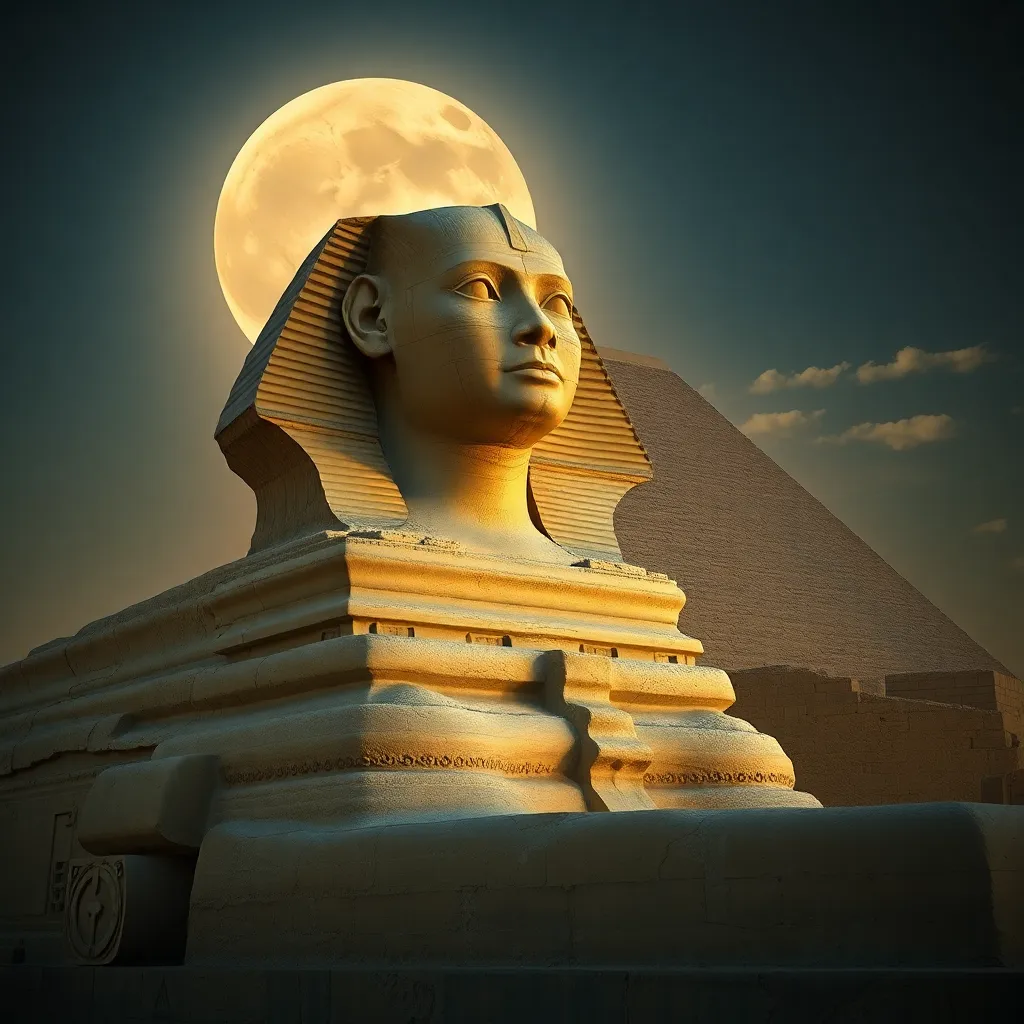The Sphinx and Its Connection to Egyptian Science
I. Introduction
The Great Sphinx of Giza stands as one of the most iconic symbols of ancient Egypt, representing not only the grandeur of pharaonic architecture but also the sophisticated scientific knowledge of the civilization that built it. With the body of a lion and the head of a pharaoh, the Sphinx is a testament to the artistic and engineering prowess of the Egyptians, reflecting their beliefs and cultural values.
The significance of Egyptian science in the development of ancient civilization cannot be overstated. The Egyptians excelled in various fields, including medicine, mathematics, and astronomy, all of which were essential for their agricultural, architectural, and religious practices. This article aims to explore the profound connection between the Sphinx and the scientific achievements of ancient Egypt, shedding light on how this remarkable structure embodies the knowledge and innovations of its time.
II. The Historical Context of the Sphinx
The Great Sphinx was constructed during the reign of Pharaoh Khafre, around 2500 BCE, making it one of the oldest monumental sculptures in the world. Its location on the Giza Plateau, adjacent to the Pyramids of Giza, underscores its importance in the religious and cultural landscape of ancient Egypt.
The Sphinx played a significant role in ancient Egyptian culture as a guardian figure, believed to protect the pharaoh’s tomb and the surrounding area. It symbolizes strength and wisdom, embodying the dual aspects of ferocity and benevolence. The Giza Plateau itself served as a center for scientific inquiry, where astronomers, architects, and mathematicians converged to study the heavens and develop technologies that would advance their civilization.
III. Architectural Marvel: Engineering Techniques of the Sphinx
The construction of the Sphinx is an engineering marvel that showcases the advanced techniques employed by the ancient Egyptians. Recent studies suggest that the statue was carved directly from the limestone bedrock, a process requiring immense skill and labor.
- Construction Techniques: The Egyptians likely used copper tools and stone hammers to shape the Sphinx, leveraging their understanding of the material properties of limestone.
- Materials and Tools: The availability of local materials and the development of specialized tools played a crucial role in the construction process.
- Mathematics and Geometry: The design of the Sphinx reflects a sophisticated understanding of mathematics, particularly in the use of proportions and symmetry, which were integral to Egyptian architecture.
IV. Astronomy and the Sphinx
The alignment of the Sphinx with celestial bodies is one of its most intriguing aspects. Positioned to face the rising sun, the Sphinx reflects the Egyptians’ deep connection to astronomy and their beliefs about the cosmos.
- Celestial Alignment: The Sphinx is aligned with the constellation Leo, which was associated with the pharaoh and the idea of divine kingship.
- Astronomical Observatory: Some researchers propose that the Sphinx may have functioned as an astronomical observatory, allowing ancient Egyptians to track the movements of stars and planets.
- Cultural Reflection: The Egyptians’ understanding of the cosmos is evident in their mythology and religious practices, which often incorporated celestial themes.
V. The Sphinx and Egyptian Medicine
The Sphinx also holds connections to the medical practices of ancient Egypt. The symbolism of the Sphinx is often linked to healing and protection, reflecting the Egyptians’ belief in the interconnectedness of health and spirituality.
- Symbolism of Healing: The Sphinx was seen as a protective entity, safeguarding not only the tombs of the pharaohs but also the health of the living.
- Medical Knowledge: Artifacts and tomb inscriptions from the surrounding area reveal sophisticated medical practices, including surgery and herbal remedies, which were advanced for their time.
- Integration of Science and Spirituality: The Sphinx serves as a symbol of the integration of science and spirituality in ancient Egyptian culture, where medical knowledge was often intertwined with religious beliefs.
VI. The Sphinx’s Influence on Subsequent Scientific Thought
The legacy of the Sphinx extends far beyond ancient Egypt, influencing later civilizations and shaping the foundations of scientific thought.
- Later Dynasties: The Sphinx continued to inspire awe and reverence in subsequent Egyptian dynasties, symbolizing the enduring power of the pharaohs.
- Greek Philosophy: The Sphinx became a symbol of wisdom in Greek philosophy, representing the pursuit of knowledge and the mysteries of existence.
- Contemporary Culture: Today, the Sphinx remains a powerful symbol of knowledge and mystery, inspiring countless works of art, literature, and scientific inquiry.
VII. Modern Scientific Exploration of the Sphinx
Modern archaeological studies have shed new light on the Sphinx, revealing secrets that have captivated researchers for centuries. Advances in technology, such as ground-penetrating radar and 3D scanning, have allowed scientists to explore the Sphinx in unprecedented ways.
- Archaeological Discoveries: Recent excavations around the Sphinx have uncovered artifacts and structures that provide insights into its historical context.
- Technological Advancements: Innovative technologies have enabled researchers to investigate the Sphinx’s construction techniques and potential hidden chambers.
- Ongoing Debates: Despite extensive research, debates continue regarding the origins and purpose of the Sphinx, highlighting the complexities of ancient Egyptian civilization.
VIII. Conclusion
The Great Sphinx of Giza stands as a monumental testament to the scientific achievements of ancient Egypt. Its construction, alignment with celestial bodies, connections to medicine, and enduring legacy illustrate the sophisticated knowledge of the Egyptians.
Preserving historical sites like the Sphinx is crucial for future research, as they hold invaluable insights into the past. The enduring mystery of the Sphinx continues to fascinate scholars and the public alike, contributing to our understanding of ancient science and the remarkable civilization that created it.




